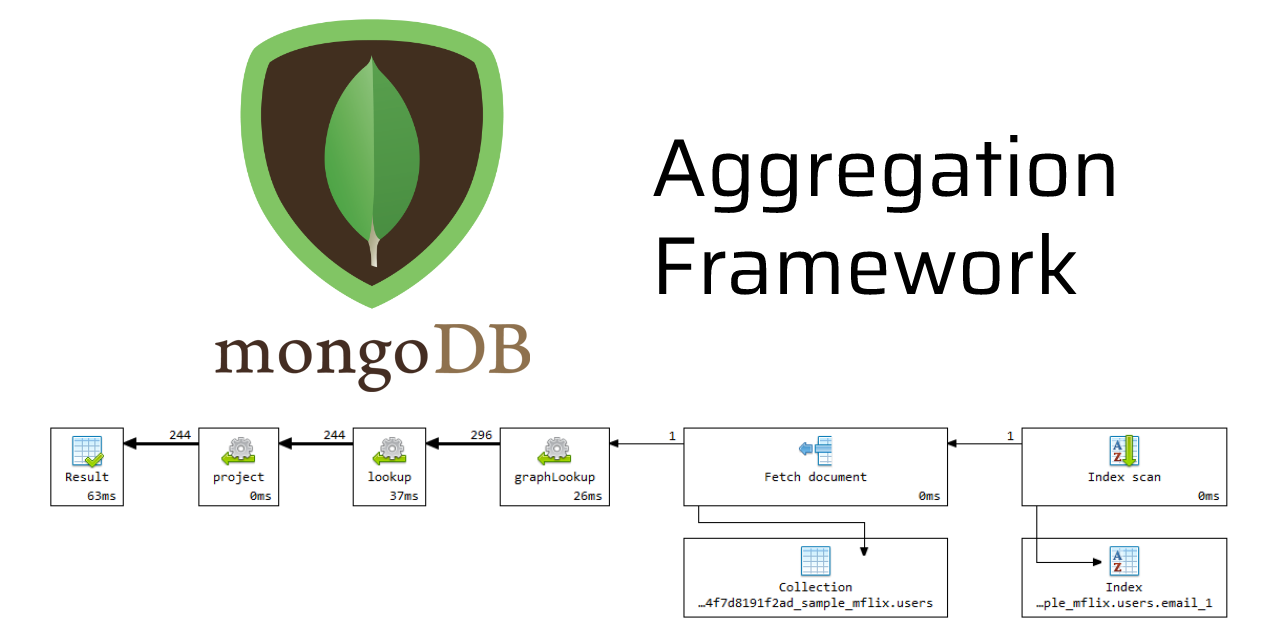Mastering MongoDB Aggregation Pipelines: A Beginner's Guide with Code Examples
 ARSHAN ALI
ARSHAN ALI
Introduction: MongoDB aggregation pipelines are a powerful feature that allow you to process and analyze data in your MongoDB collections. In this guide, we'll take you through the basics of aggregation pipelines, step by step, with clear explanations and practical code examples.
Understanding the Basics: Aggregation pipelines in MongoDB are composed of stages, each performing a specific operation on the data. Let's start by looking at a simple pipeline with two stages: $match and $project.
db.collection.aggregate([
{ $match: { status: "A" } }, // Filter documents by status "A"
{ $project: { _id: 0, item: 1, status: 1 } } // Project only item and status fields
])
n this example, we're filtering documents where the status field is "A" and then projecting only the item and status fields.
Aggregation Operators: MongoDB provides a rich set of aggregation operators to perform various operations in the pipeline. Some commonly used operators include $group, $sort, $lookup, and $unwind. Let's explore a few of them:
db.sales.aggregate([
{ $group: { _id: "$item", totalQuantity: { $sum: "$quantity" } } }, // Group by item and calculate total quantity
{ $sort: { totalQuantity: -1 } } // Sort documents by total quantity in descending order
])
Here, we're grouping sales by item and calculating the total quantity sold for each item. Then, we're sorting the results by total quantity in descending order.
Advanced Techniques: As you become more familiar with aggregation pipelines, you can start combining multiple stages and operators to perform complex data transformations. Let's take a look at an example that uses $lookup to perform a left outer join between two collections:
db.orders.aggregate([
{
$lookup: {
from: "inventory",
localField: "item",
foreignField: "sku",
as: "inventory_docs"
}
}
])
In this example, we're joining the orders collection with the inventory collection based on the item and sku fields, respectively.
Real-World Applications: Aggregation pipelines are incredibly versatile and can be used in various real-world scenarios, such as generating reports, performing analytics, and building recommendation systems. Whether you're analyzing sales data, tracking user activity, or aggregating logs, MongoDB aggregation pipelines can help you extract valuable insights from your data.
Conclusion: Congratulations! You've now mastered the basics of MongoDB aggregation pipelines. Armed with this knowledge, you can confidently use aggregation pipelines to process and analyze your MongoDB data like a pro. Keep experimenting with different stages and operators to discover new ways to unlock the potential of your data.
About the Author: Arshan Ali, a student of computer science, is dedicated to learning and sharing his thoughts and experiences with you. Follow for more insights and learning, because the journey of learning is an upward curve that never stops.
Subscribe to my newsletter
Read articles from ARSHAN ALI directly inside your inbox. Subscribe to the newsletter, and don't miss out.
Written by
